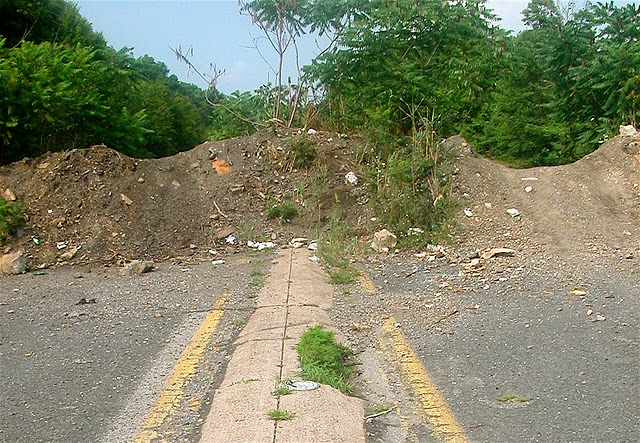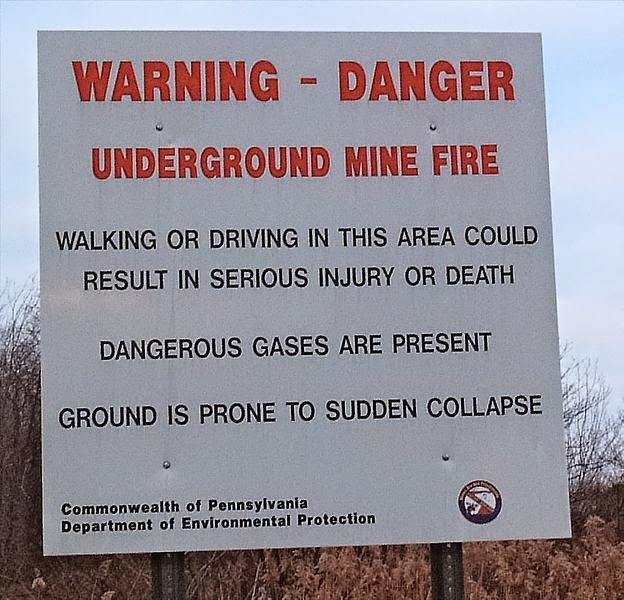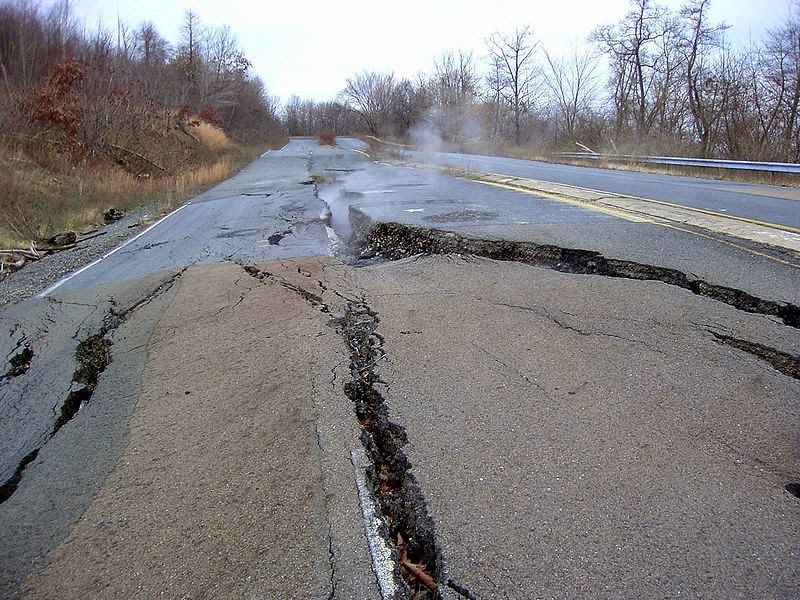I recently ran across a story I had heard about but had forgotten. It involved a fire that burns in the United States underground, right now, and has been doing so for over 50 years. What’s even harder to fathom is that this fire could burn for another 250 years. I’m talking about the Centralia mine fire in Pennsylvania, a disaster that first took place in 1962.
Since that time in ’62, a coal seam in the Centralia mine has been on fire at depths up to 300 feet. The fire is eight-miles in length, and covers 3,700 acres, all underground. The cause is largely unknown but there are a number of hypotheses on how it started. The most common explanation is that burning trash ignited the coal seam in a cave, causing a massive fire.
Back in 1962, the Centralia City Council had the intention of cleaning up the town’s landfill that was located in a previously cut strip mine. It had been proposed as a way to stop the problem of illegal dumping which had sprung up around the area. Ironically, I guess, the State of Pennsylvania had passed a law in 1956 that regulated landfills used in strip mines because of the danger of fire from a mine. An inspector from the state even informed a councilman that the pit would need to be filled with some type of incombustible material when he saw that the landfill had developed holes in the walls and ground. It’s unknown why, but instead of filling the landfill with incombustible material, the council decided to set the landfill on fire to clean it up.
They hired a fire crew to do the job on May 17, 1962, and a fire was started. The crew was able to extinguish the fire that night, but more flames were seen on May 29 as well as on June 4th. They tried moving the garbage with a bulldozer to get at the layers that could still be on fire, but what was discovered a few days later was a 15 foot-wide hole that had been hidden where garbage had accumulated. It was believed this hole may have led to the old tunnels of the mine and the combustible coal seam. Even with all of this going on, the council continued to allow dumping in the landfill.
Things became serious when holes that had smoke coming from them were tested and found to have carbon monoxide amounts that were consistent with those in other mine fires. Lethal levels of carbon monoxide were found on August 9th, and all mines in the area were closed. An early attempt at excavating the site was done shortly thereafter, but once other mine chambers were opened to get to the fire, the influx of oxygen only fueled it further. Eventually the project ran out of money and had to be stopped because the crews couldn’t keep up with the growing fire that was now going deeper.
A second attempt at extinguishing the fire was made in November of 1962, with the idea of filling the mine and snuffing out the fire with crushed rock mixed with water that would be pumped into the areas of the mine ahead of the known fire. Funding ran out again in March of 1963, and because of a cold, snowy winter, the ability of the company to fill the areas was substantially affected. By this time in 1963, the fire had already spread 700 feet from where it was believed to have started.
It wasn’t until 1979 when the locals began to discover that the problem was much greater than they had realized or been told. In 1981 the problem came to a head when a 12 year-old boy named Todd Domboski fell part-way into a 4 foot sinkhole that was 150 feet deep that had opened up in his backyard. Luckily he was saved by his cousin who pulled him to safety. The steam coming from the sinkhole had carbon monoxide that was measured to be at lethal levels. The town of Centralia had a serious problem, and a deadly one at that.
 |
| Roadblock going into Centralia Lyndi & Jason/flickr |
The U.S. Congress in 1984 allocated more than $42 million for the relocation of the Centralia area residents. Most residents left, but some chose to stay. In 1992, the Pennsylvania governor used the power of eminent domain to condemn all the buildings. A legal fight followed by some of the residents, but it failed. The U.S. Postal Service revoked the zip code of Centralia in 2002, and in 2012 the last remaining residents were ordered to leave after they lost their appeal in court. Seven residents were allowed to stay in 2013 to live out their lives, after which their properties would be taken through eminent domain. These were the only people left from the population of 2,761 people that lived in the town in 1980. But Centralia wasn’t the only casualty of the mine fire. The nearby town of Byrnesville also had to be abandoned and leveled to the ground.
 |
| Abandoned bench with revoked zip code Douglas Muth/flickr |
The Centralia mine is believed to have enough fuel to burn for another 250 years as it continues to follow the vast coal seam and tunnels underground. Temperatures inside the heart of the fire are believed to be more than 1,000 degrees Fahrenheit and contain a lethal mix of carbon monoxide and other gases. Even with the deadly fumes and danger, Centralia has become a tourist attraction as people go to see a fire that can’t be stopped and a town that has disappeared.
From the book Knowledge Stew: The Guide to the Most Interesting Facts in the World



